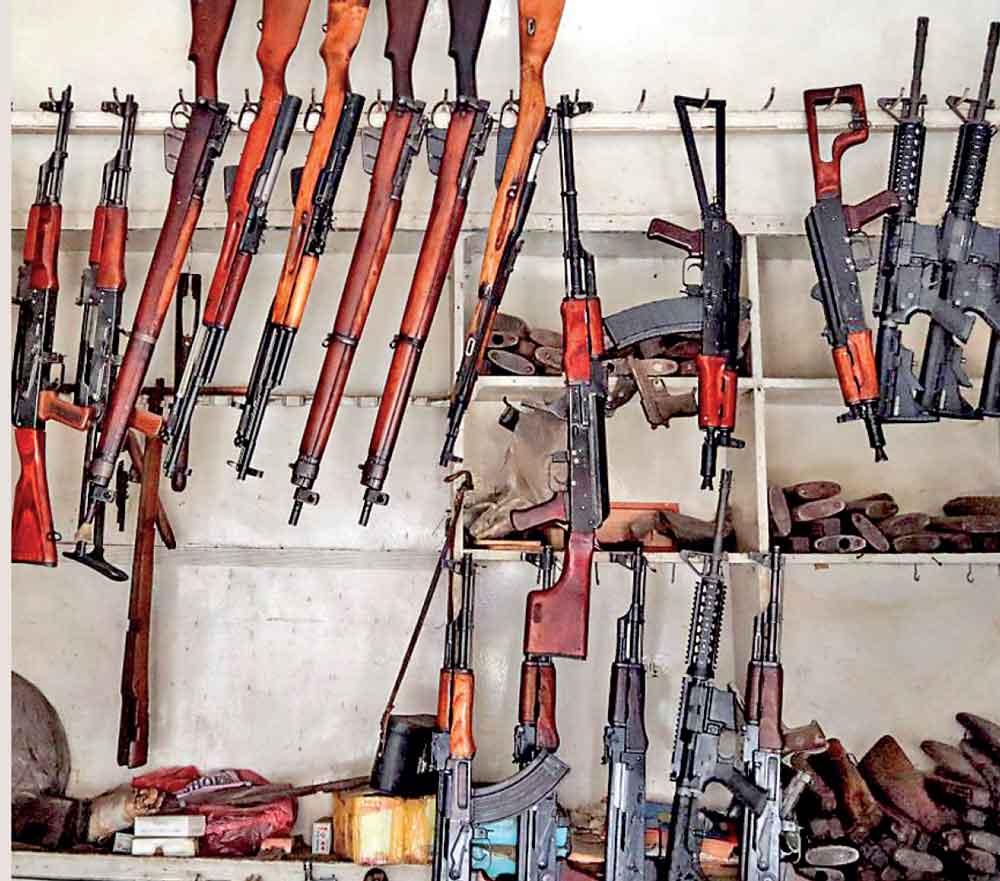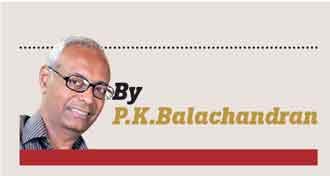19 Oct 2024 - {{hitsCtrl.values.hits}}

A small arms shop of Darra Adam Khel in Pakistan
The new laws should close a legal grey area for gun manufacturers and limit the production and sale of illegal weapons
Small Arms or Light Weapons (SA/LW for short) are “crew –portable land-based armaments”
Small arms and light weapons are in demand because they have a low rate of obsolescence, rarely require spare parts, do not need an elaborate infrastructure for production, can be moved from one country to another or place to place with speed because of their portability,less expensive than major conventional weapons and can be used without extensive training
According to Izumi Nakamitsu, UN’s High Representative for Disarmament Affairs, SA/LW contributed to some 200,000 deaths every year from 2010 to 2015
 According to the United Nations, in 2020, there were one billion small arms in use around the world. And these were with terrorists, groups involved in internal conflicts, organized criminals and warring gangsters.
According to the United Nations, in 2020, there were one billion small arms in use around the world. And these were with terrorists, groups involved in internal conflicts, organized criminals and warring gangsters.
Small Arms or Light Weapons (SA/LW for short) are “crew –portable land-based armaments”. These include pistols, rifles, assault rifles, sub-machine guns, light and medium machine guns with a calibre not exceeding 14.5 mm.
According to Ms. Izumi Nakamitsu, UN’s High Representative for Disarmament Affairs, SA/LW contributed to some 200,000 deaths every year from 2010 to 2015. No State was immune to the challenges posed by illicit weapons flows, Nakamitsu added.
“They were used to kill and maim children, and also indulge in rape and other forms of sexual and gender-based violence,” she said.
All this is happening despite the existence of international instruments intended to combat illicit trade in SA/LW. These instruments include the 2001 Programme of Action to Prevent, Combat and Eradicate the Illicit Trade in Small Arms and Light Weapons; the Arms Trade Treaty and the International Tracing Instrument. According to the UN Secretary General, in 2016-2017, the success rate in tracing illicit weapons, was only 13%.
Sri Lanka
Sri Lanka is among countries that had seen two lightly armed insurgencies and a full-scale separatist war cum terrorism using big weapons in the period 1971-2009. No wonder small arms proliferation was a problem here, during and immediately after the end of the conflicts.
In January 2004, a general amnesty was granted to illicit small fire arm holders. But only about 1,300 weapons were handed over according to Sunday Times. In a second amnesty in October the same year, only about 500 weapons were handed over under a buy-back programme, the paper said.
In 2005, President Chandrika Kumaratunga, in keeping with a United Nations resolution, established a National Commission Against Proliferation of Illicit Small Arms (NCAPISA). According to Daily News 35,000 illicit small arms, collected from various parts of Sri Lanka barring the former war-zone in the Northern and Eastern Provinces, were destroyed at Independence Square in Colombo, on International Gun Destruction Day July 7, 2006.
But the war had militarized crime and political thuggery in Sri Lanka. Arms recovered from the war zones of the North were smuggled to the South to be sold to drug lords and other criminals. Some army deserters also contributed to the illicit trade. In addition, governments had allowed politicians to carry two licensed repeater shotguns for their protection. Recently, The Sunday Morning reported that MPs had been allowed a semi-automatic pistol in addition to the shotguns. All this is because, over the years, politics in Sri Lanka had become violent involving the use of firearms.
Pakistan
Pakistan has been awash with illegal small arms for decades. Pakistan manufactures SA/LW both in the organized and unorganized sector, both legally and illegally, says Salma Malik in her paper entitled: “Domestic Production, Illegal Manufacture and Leakage of Small Arms, A Case Study of Pakistan” (Academia). A faculty member at the Quaid-i-Azam University, Islamabad, Malik says that the problem of illicit SA/LW is the most acute in the erstwhile North-West Frontier Province, now known as Khyber Pakhtunkhwa or KP. KP has been historically famous for its gunsmiths who have the skill to make sophisticated small arms in their backyard with minimum equipment and fuss.
Malik states that the proliferation small arms and their indiscriminate use have given rise to problems such as the influx of refugees, displacement of entire populations from conflict zones, economic chaos, social instability and violent militancy. SA/LW are acquired by criminals, drug cartels and irregular forces. In certain cases they are acquired by influential citizens and politicians “to show off their political might.” Malik has no hesitation in describing small arms as “weapons of war.”
Why are SA/ LW so popular? They are much in demand because of the following reasons, according to Malik: (1) They have an exceptionally low rate of obsolescence ; (2) They rarely require spare parts; (3) They do not need an elaborate infrastructure for production; (4) They can be moved from one country to another or place to place with speed because of their portability; (5) They are less expensive than major conventional weapons ; (6) They can be used without extensive training.
Afghanistan Factor
Although SA/LW have always been available in Pakistan in arms bazaars in KP such as Darra Adamkhel and Landi Kotal, the free flow of modern light weapons increased manifold only after the Soviet occupation of Afghanistan in December 1979. The Soviet invasion resulted in Pakistan’s proactive support to the various Afghan Mujahideen outfits engaged in fighting the Soviets.
This effort was partially driven by Pakistan’s own security interest but was mainly driven by it’s alliance with the United States. The US provided material and financial assistance to the Afghan guerrillas through Pakistan.
To quote Malik in full: “As a front line ally, Pakistan became the conduit for the massive US military assistance programme, its top Intelligence outfit, Inter-Services Intelligence agency (ISI), managing the receipt and distribution and the American CIA coordinating the supply of weapons.”
“With a bitter Vietnam experience still fresh in memory, the United States, at least initially, did not want to be seen as providing direct military assistance for the Mujahideen, and for this reason, massive amounts of arms were purchased from the Chinese government.”
“Interesting trends could be witnessed in this undercover arms pipeline; the CIA would procure through Egypt, large amounts of antipersonnel mines originally produced in Italy. The CIA would then arrange for the arms to be either flown to Islamabad or shipped, via Oman, to Karachi.”
“The autonomy given to the Pakistan intelligence services in controlling the distribution of the weapons was to have a profound effect on subsequent security conditions in the region.”
Even after the cessation of Soviet occupation, Afghanistan remained in a civil war mode which cast dark shadows over Pakistani society. About this, Malik goes on to say: “ An excessive accumulation and transfer of small arms are closely related to the increased incidence of conflicts and high level of crime and violence in Pakistan. It is observed that Non-State forces make extensive use of the arsenal due to their easy accessibility, storage and handling.”
“The most perturbing aspect of these internal conflicts is that more than 80% of the causalities are civilian, non-combatants - mostly women and children.”
The Pakistan Ordnance Factories produce only what is required by the Pakistani military, and this of course is quite small. Private manufacturers produce certain non-prohibited bore weapons under license. The organized legal arms manufacturers are limited in number, and are concentrated mainly in the Punjab and Karachi.
But the arms bazaars of Darra Adam Khel & Landi Kotal in the NWFP/KP are booming continuously producing and selling to a variety of clients. The tribal areas of KP has been outside the pale law historically being governed only by local tribal laws.
Before the Soviet invasion, Darra Adam Khel used to produce mainly 9-mm rifles and shotguns in addition to pistols ranging from .22 to .32 etc. But they now manufacture Kalashnikovs, bazookas and even rocket launchers. Al Jazeera reported that a copy of an M16 rifle – issued as standard-issue to US soldiers – could be bought for 30,000 Pakistan rupees (US$ 214), a quarter of the cost of the original. A basic pistol could be bought for as little as US$ 21.
According to the War Resisters’ International, in 2020, the provincial government of KP took steps to establish an industrial estate focused on arms production. The estate was to be in Dara Adam Khel as arms making supported 28% of the local population.
The decision to setup the industrial zone was made after the Federally Administered Tribal Areas (FATA) were merged with the Khyber-Pakhtunkhwa (KP) province. The FATA would be under the Pakistani government’s legal system.
The new laws should close a legal grey area for gun manufacturers and limit the production and sale of illegal weapons. By law, all gun manufacturers in Pakistan must obtain a permit. High-calibre weapons are much more restricted. It was hoped that these steps would rein in rogue elements in Pakistan’s arms trade. But it is doubtful if these measures have succeeded, given the growing violence indulged in by terrorist groups and other lawless elements.
25 Dec 2024 8 hours ago
25 Dec 2024 9 hours ago
25 Dec 2024 9 hours ago